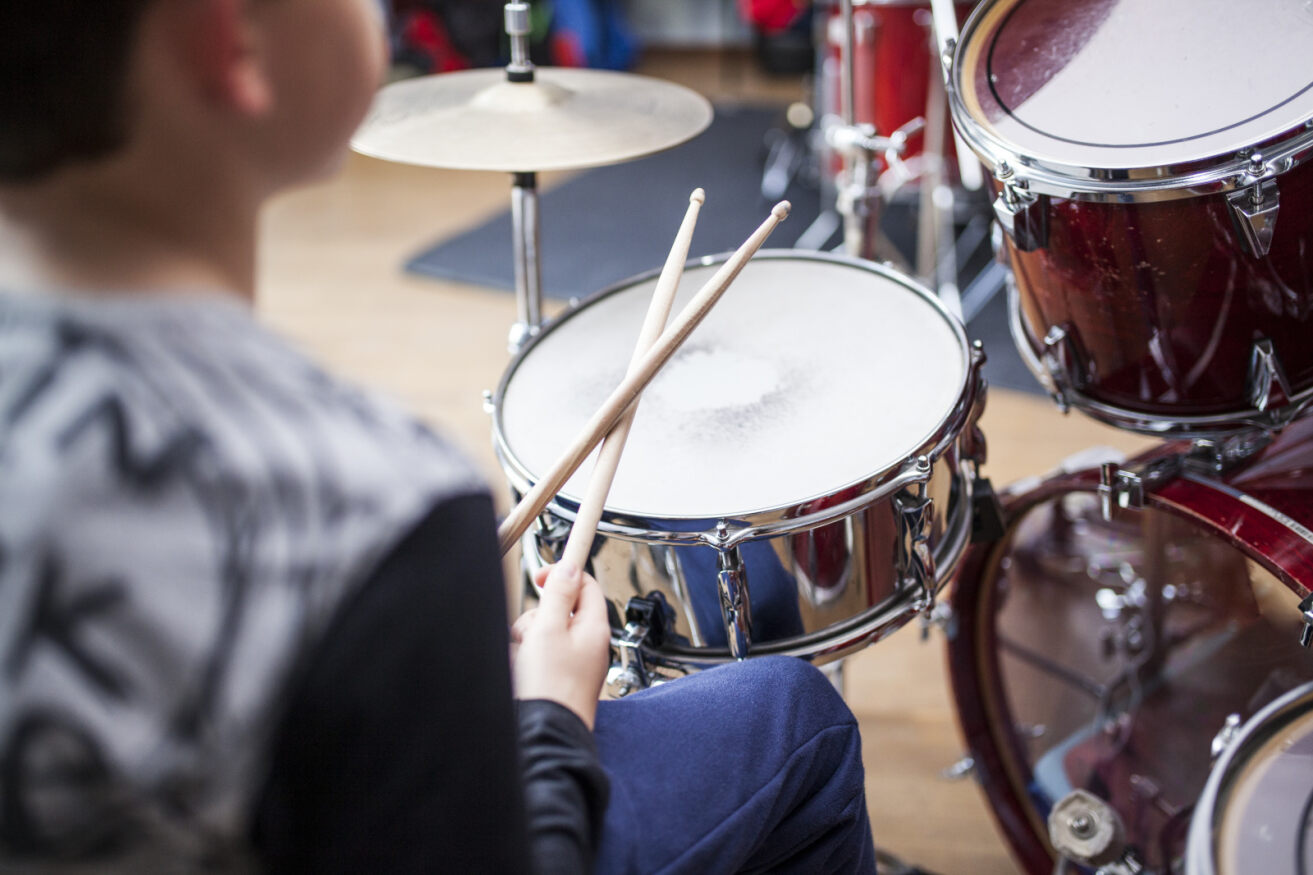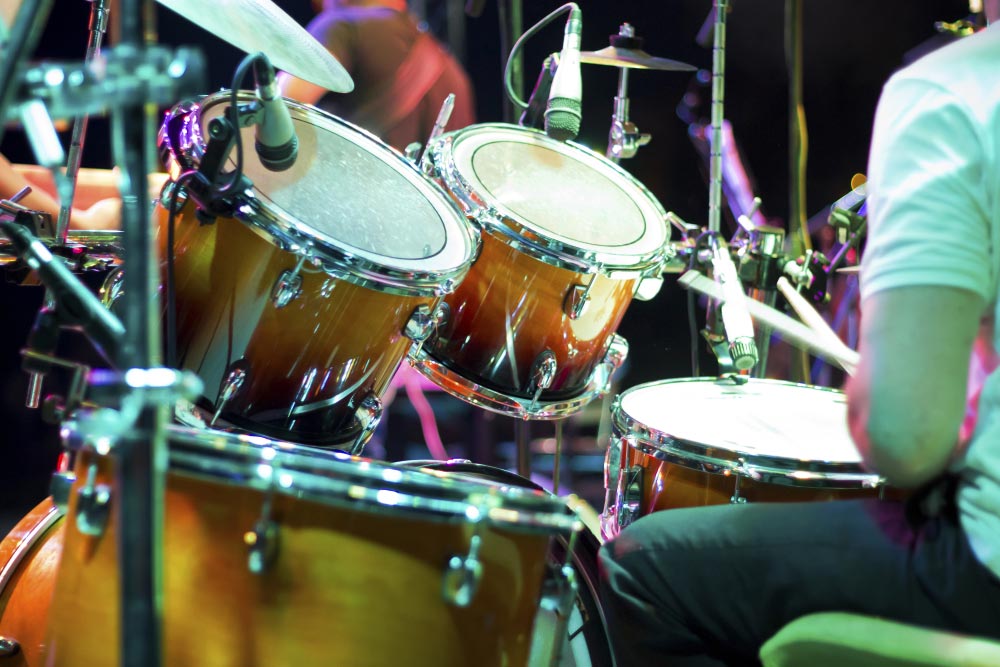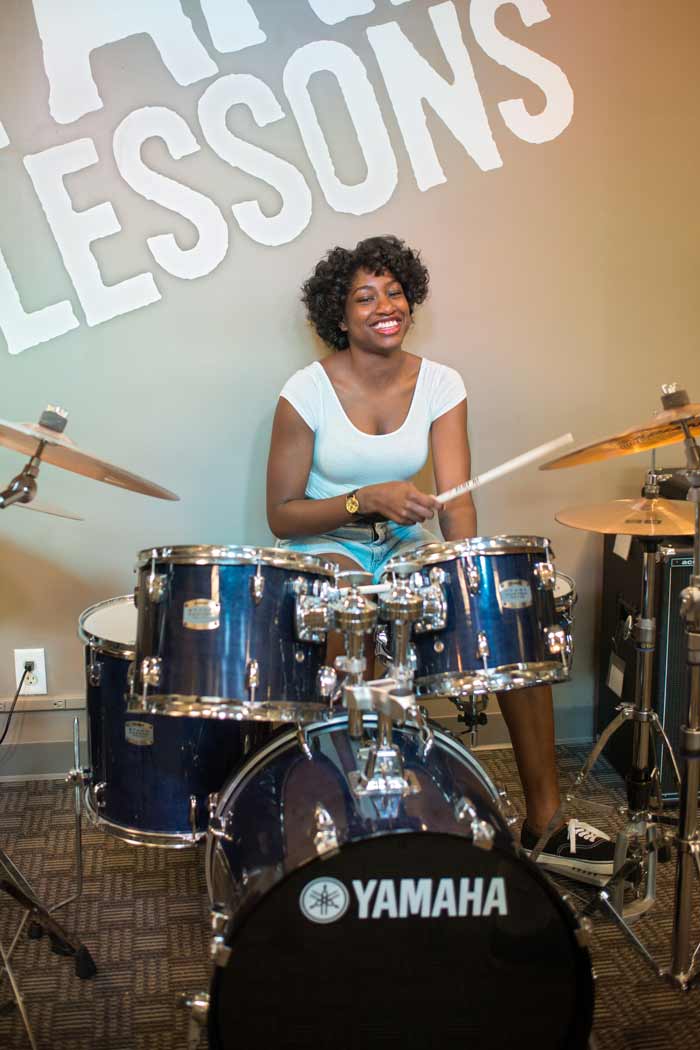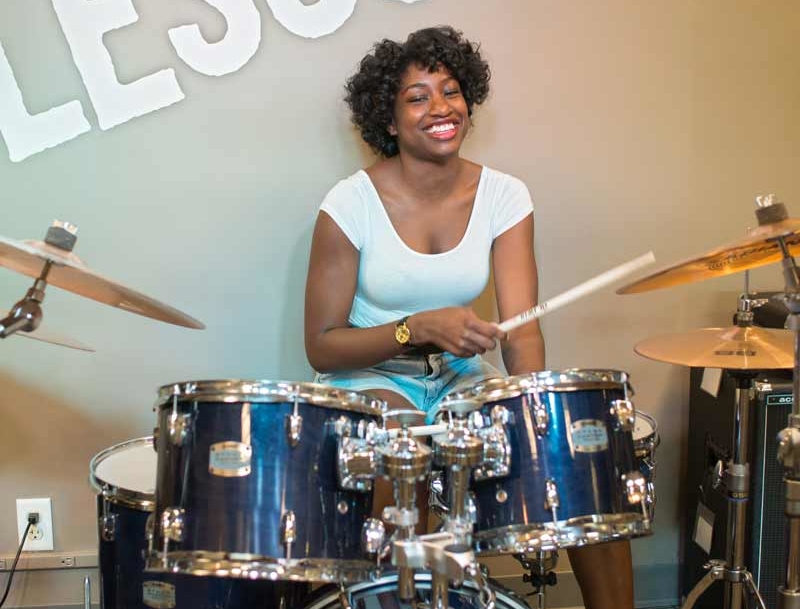May 04, 2015
Everything You Need to Know About Drumsticks


As a drummer, your drumstick is an extension of your mind. Remember the glory days, when you would play symphonies with mom’s pots and pans scattered about the kitchen floor, with only a wooden spoon to conduct the notes. You can look back fondly to where it all began, and marvel at far you have come.
Now that you’ve grown up you have honed and perfected your craft. That next masterpiece is just waiting to come alive. All you need is a good pair of drumsticks, and a solid knowledge base about what you can do with those slim wooden sticks. Add just the right touch and your imagination is sparked anew.
Travel Back In Time
Back in the early days, actually many centuries ago, the drum stick appeared in mallet, wooden, and brush form. They were mostly used on percussion instruments during rituals. In the Middle Ages people would use them to add rhythm and music to live performances. The first ever noted drumstick appeared in Seventh-Century Asia. The features of the drumstick that we see today are very much the same design our ancestors used.
They contain a bead (Tip), shaft, and butt(Bottom of the stick). Gradually, we have refined the finish and gauges of the wood or mallet and experimented with different beads to get a wide range of sounds. Fast forward to Postwar America to the Happy Days of the ‘50s where music really a home everywhere. The ‘50s brought us the cutting edge sounds of James Brown and Paul McCartney, where the bass drum was combined with the good ol’ blues. In 1958, Hall of Fame drummer Joe Calato invented the nylon tipped drumstick, This advancement gave drummers a trustworthy, articulate sound with added durability.
A Look at Today’s Drumsticks
Modern times have given drummers a more refined drumstick, making it possible for drummers of all backgrounds to find their perfect pair. You can find drumsticks made graphite, aluminum or even glow in the dark. With so many options available to you, you’ll want to stay in the know with all the current sounds and effects. Finetune your craft by simply reading up on some of these great facts. Those drumming skills of yours will be airtight!
The Classic Lettering and Numbering System
The number and lettering system origin is a bit unclear. We do know that in the early 20th century, there were a large range of sick sizes. They ranged from size two, to size nine. The number represents the diameter of the stick – so the larger number, the smaller the stick’s diameter. The accompanying lettering system designated the musical application each stick was intended for. For example, for the fine and delicate sound found in an orchestra, you would use an ‘A’ stick. But why wasn’t the more obvious letter. ‘O’ used instead? In The Drum A History Matt Dean explains that the renowned drum manufacturer, William F. Ludwig chose to use ‘A’ because of his ‘preference of the letter and dislike of the aesthetic quality of the printed letter ’O’’. Orchestra sticks are too small to be used for anything other than small bands and they are sized 7, 8, and 9. While most companies have adapted to this standard, many others have their own coding. So be careful when making a purchase!
What Your Stick is Made Of
The days of drumsticks made from bones or simple sticks are behind us. The simple answer, is your drumstick is made of wood. Wood is the number one choice, as it can be hard, yet elastic at the same time. These days, your options are more ergonomic. Drumsticks come in the hearty hickory which is dense and inflexible. Maple produces a brighter sound that you’re likely to hear in most marching bands. Oak drumsticks are designed to take a beating. Least common, they produce a loud, hard sound,. Modern times have also seen the emergence of lightweight of carbon fibres and metals. Or, choose from the sleek rattan for a more hollowed sound.
Modern Sizing and Lettering Standards
Most manufactures stick to the same diameter and lettering rules. Some others that make speciality sticks, may not match what you are used to, so make sure you are doing your research. Your basic lettering system is as follows:
A: This stick is used for Orchestra
B: You’ll see these used in marching bands
S: A common drumstick for the street bands
D: These were used for dance band
Here is a look at some of the other industry standards of drum sticks:
7A Vater Traditional These guys are accurately dubbed traditional. You would use these for a lighter drum session. They are perfect for the young drummer . They are smaller in circumference than the 5A, which makes it easier for a child to grasp.
5A/5B Vater American are well known as the ‘common’ of all the drumsticks. They are generally used for ‘Rock’ performers.
2A/2B Los Cabos was created for the metal head rocker. Hickory is know to the most durable of all the sticks on the market. The durability makes great practice sticks.
5S/2S Vater Nighsticks Ideal for the larger handed drummer
The Variety of Drumstick Tips
Drumsticks are a whole lot more than just the ‘stick’ part. The tip is profound in the overall magic of it’s sound. They come in five different shapes.
:Vater Oval provide the largest spectrum of sound.
Vater Teardrop are used for a warm and low focused tones
ProMark Round round/ball shapes give a clean and crisp tone.
Vater Acorn will give a punchier and full sound
The Buzz About Brushes and Mallets
There is some mystery to behold about mallets and brushes.! For centuries, humans have been hitting things with sticks to make sound. Some of us have even perfected the Air Drum concerto. Historically, the idea brushes would be perfected by the drumming superstar Papa Pa Jones and later tried and mastered with grace if legends Ed Thigpin and Philly Joe Jones.
Present day artists have also caught the brush vibe. It’s energy has made it all the way to the UK with Florian Alexandru-Zorn proudly representing Europe. When you switch out your regular old drumsticks for a brush, your world gets a whole lot bigger. Not only do you get to explore new sounds, but you get to add that spice to your signature sound that no one but you can reproduce. Explore all the swooshes and swishes paired with drum beats to create something truly unique. Drum Magazine gives you the down low to all tricks behind mastering brush percussion. Don’t forget to head over to our site Music Arts to grab your own pair of these percussion brushes.
The Details Behind The Brush and the Mallet
The percussion mallet is a type of drum stick used in a striking or ‘beating’ motion to produce an airtight echo. They range from a staccato – harder and legato- softer form . Other types of mallet is the unwrapped mallet made of brass, nylon or wood tips which help to create the beautiful tinny of the xylophone. If you’ve always wanted to try your drumming skills at the Marimba, you’ll need the wrapped mallet which is often wrapped in kelon or felt. The iconic carthweel mallet is found in marching bands. Made of layers of felt between two metal washers. They give a soft timbre perfect for cadence. An important variable to consider with all mallets is the composition of the shaft. Shafts made of fiberglass, plastic, birch, and rattan (a flexible species of palm also used in furniture production) are the most common.
Brushes
Percussion Brush drumming is an unconventional way to create beautiful music. A quick online search show this technique has been perfected by Ben Riley and Joe Morello and many others. Percussion brushes come in a variety with unique components:
Wires: This mallet is among the most common brush used today. They sound bright and give a bit of a snappy timbre. When it flicks acrossed the drum, the sound you get is crisp and soft. Vic Firth and Gadd have perfected this style with the velvet sound of a smoother sweep.
Retractable: These brushes can be retracted by the metal rod at the end of the stick. This is useful to control the width and amount of fan you want to use with each stroke, allowing you to play with different sounds. Innovative has a beautiful pair made with supple wire filaments.
Handles: The simple idea of handled brushes is to affect how you feel as you play. They are a lot of fun to play because way you feel handling this brushes directly influences the sound overall. Some common materials used is rubber, plastic, wood and aluminum. The synthetic wood brushes from Innovative are just the right ones to get you exploring.
Heads: This is the most important part of your brush. The fan size, density of wires will determine your sound. These wires need to specially coated in Remo Fiberskyn
The Art of Drumming is at Your Fingertips
Now that you have had a backstage pass into the world of drumming, go forward and choose the right drum sticks. You will carry these into every practice and prime them for your success. You can now master any method of drumming, and hopefully you’ll have a lot of fun creating your next drum solo.







